Naemi Reymann communication..interfaces..culture I English
I live and work as a freelance communication designer in Duesseldorf, the capital of North Rhine-Westfalia/Germany. My services are consultancy and graphic design (including sustainable products and services) and topics related to water.
My services are:
- corporate design (including logo and text support)
- flyer, brochures and poster
- screendesign & infographics
- exhibition design
- lectures (I am listed at speakerinnen.org) and workshops
- support at social media & community building
Since 2013 I work as juror (e.g. film festivals of BDFA Bundesverband Deutscher Filmautoren and Underwater Photo Global Championship (World Shoot Out) at Boot Duesseldorf 2016/2017). Do you want to see examples of my work? Portfolio or Download here![]() (eng. version)
(eng. version)
Water is life
In 2000 I started scuba diving (CMAS **) with a strong interest in marine biology and underwater archaeology (NAS-II certificate at Nautical Archaeology Society Portsmouth/UK in 2011) and since 2014 I am a multiplier for special course Denkmalgerechtes Tauchen (introductory course underwater archaeology) at VDST (German Underwater Federation) and KUWA and since 2016 multiplier at CMAS »Underwater Cultural Heritage Discovery Course« and I assist to UW-Archäologie I (Underwater-Archaeology I)-Course) at TSV NRW.
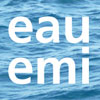 |
eauemi – my weblog about water themes (german). | 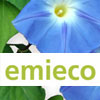 |
emieco – my weblog about eco & design themes (german). |
Another website is camera-curiosa.de, or follow me on twitter or my film vimeo channel!
Networking – working together
Multidisciplinary backgrounds and also teams are often stronger and more flexible than a big agency. Working individually or in teams – depending on the project – together with specialists from media, photography, communication, advertising, art, culture, and environment.
My networks and memberships
- Signing of Charta for Sustainable Design by the Alliance of German Designers (AGD)
(at the end of this site you can read the english version of the Charta!)
- designertreff düsseldorf (Designer network at Düsseldorf)
- Kulturserver – The Community for Art and Culture
- CREATIVE.NRW – Cluster for Creative Industries in North Rhine-Westphalia
- Ruhrdesigner (creative network at Essen / Ruhr)
- Verband deutscher Sporttaucher (VDST – German Underwater Federation),
German ambassador of Confédération Mondiale des Activités Subaquatiques (CMAS)
- Spiritual World Diving Foundation SWDF (HEPCA Partner)
- XING
- LinkedIn
- Agenda 21group /Lokale Agenda 21 Duesseldorf, team captain STADTRADELN 2014-20
- contact MediaMundo, f:mp et al.
Languages: German, English, French, Dutch & Latin
E-Mail: naemi @ reymann-design.de
I hold a a diploma in communication design from Braunschweig University of Art (HBK) with an interactive CD-rom game about laughing (realised at Institut für Medinforschung – Institute of Media Research (IMF). Please take a look at my website camera-curiosa.de.
For ten years I worked as Art Director for different multimedia and design agencies (e.g. culture festival »Ruhrtriennale«), and continuing vocational education and training in the skilled crafts (e-learning). For nine years I colaborated for the business community femity.net (as moderator and blogger). From 2002 to 2004 I was regional leader at webgrrls.de a digital media business network for woman. Since 2009 I am working as a freelance designer.
Publications, exhibitions, presentations (selection)
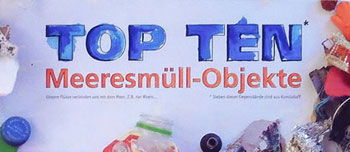 »Top Ten Meeresmüll (marine litter)«:
»Top Ten Meeresmüll (marine litter)«:
Vitrine exhibition at »Boot Duesseldorf« Boat Show and Watersport Exhibition 2017 about marine litter with my finds from Duesseldorf Rhine – presentation at VDST stand.
- Presentation
Naemi Reymann is citizen ambassador at online forum of Integriertes Umweltprogramm 2030 (IUP) of »Federal Ministry for the Environment, Nature Conservation, Building and Nuclear Safety« (German: Bundesministerium für Umwelt, Naturschutz, Bau und Reaktorsicherheit), abbreviated (BMUB). Presentation of citizen message about healthy living conditions: water at »Festival der Zukunft« 10.9.2016 Gasometer Berlin.
- Presentation special course underwater archaeology at Tauchsportverband Nordrhein-Westfalen/VDST at NRW-Tag 2016 Duesseldorf at 27.8.2016
- Juror Work since 2013 Jury member 71., 73. and 75. Deutsche Filmfestspiele BDFA Bundesverband Deutscher Film-Autoren (association of german film and video amateurs). Live juror work Underwater Photo Global Championship at Boot Duesseldorf 2016 and 2017, directed by David Pilosof (WorldShootOut) & »Silence of the Sharks«/ Film).

- Project Sunshine for Japan
9.-19.9.14 Project Sunshine for Japan: exhibition (with my poster) at Creative Network Center Mebic Ogimachi Osaka, Japan. 9.10.13 Japanese Matinee within the book launch of Project Sunshine for Japan – Performance with Akiko Inagawa, Frankfurt Book Fair Press Release (Film)/ Wikipedia. Article and interview with editor M. Rahnama & my design poster, 21.10.13 exhibition »Project Sunshine for Japan – Connecting Traces of Memory« with book presentation Depot Dortmund. Performance with Akiko Inagawa / Hochschule für Musik FFM (piano) at opening ceremony 9.3.13
Press Release (Film)/ Wikipedia. Article and interview with editor M. Rahnama & my design poster, 21.10.13 exhibition »Project Sunshine for Japan – Connecting Traces of Memory« with book presentation Depot Dortmund. Performance with Akiko Inagawa / Hochschule für Musik FFM (piano) at opening ceremony 9.3.13
- CEO-Speech (German) »Sonderschau Nachhaltigkeit« MediaMundo @drupa May 2012
- curator #week15 international twitter project @createandrotate in February 2013
- »Was bleibt von RUHR 2010?« Article (in german) about Essen European Capital of Culture 2010 and Bochum, »Kultur Joker« magazine, Freiburg August 2012
- articles and recensions about design (e.g. for AGD) since 2011 – in German
- green it installation 3D QR code with natural/artificial material, e.g. showed at
- ecostyle – The world of green products Messe Frankfurt (August 2013)
- DMY International Design Festival Airport Berlin Tempelhof (June 2013)
- ökoRAUSCH Festival Rautenstrauch-Joest-Museum Cologne (October 2012)
- n.a.t.u.r.-Festival Bochum (May 2012)
- Blaues Gold in der Warenwelt / Blue gold in the product world
exhibition about virtual water footprints in products, e.g. showed at
- Lionel Design Award 2011 - mention (July 2012)
- Karma Konsum Konferenz 2012 with Hansgrohe (May 2012)
- ökoRAUSCH Barthonia-Forum Cologne (Sept 2011)
- RUHR.2010-project t.a.i.b. Bochum (July 2010)
- Politischer Salon, Grillo Theater Essen (Oct 2010) - NAS II report (Intermediate certificate in foreshore and underwater archaeology) for Nautical Archaeology Society (NAS) / DEGUWA / SAD: »Teaching methodology and knowledge transfer with the example of Archaeopark project with virtual museum« – about Arkeopark Kas Turkey & Uluburun wreck – (virtual) museum presentation scenography – education
- exhibition participations and presentations
»Verkehrte Wald« Bochum (06/2012) - panel discussion 3. Jahrestagung Kultur- u. Kreativwirtschaft U Dortmund (10/2011) - workshop na.t.u.r.-Festival Bochum (05/2011) - »In Poseidons Reich« XVI. Deguwa Conference Underwater Archaeology Heidelberg (01/2011) - 6. Rhein. Designsymposium: Design u. Nachhaltigkeit Kit Düsseldorf (09/2010) - Composites Europe Fair ruhrdesigner Essen (09/2010) - RUHRPOST.2010 Zeche Zollern II/IV Dortmund (05-09/2010) - SHK Messe ruhrdesigner Essen (03/2010)
- camera curiosa - CD-Rom about laughing (thesis) – e.g. presented at
- »Reise in die Medienkultur des 21. Jahrhunderts« Institut für Medienwissenschaften und Film (IMF) Braunschweig (May 2000)
- presentation Eyes & Ears Junior-Showcase 2000 in the context of FMX2K – Film and
Media fair 2000 and 10th International Trick Film Festival (ITF) Stuttgart (March 2000)
- exhibition »Designfertigkeiten 99« Kunsthalle ARTMax Braunschweig (July 1999)
- Filmklasse HBK Braunschweig (Jan 1999)
- Schauspielhaus Bochum CD-Rom
interactive yearbook (Macromind Director), presented at
- conference of Friedrich-Ebert-Stiftung Braunschweig (February 1998)
- Institut für Medienwissenschaften und Film (IMF) Braunschweig (March 1997)
- Des1gnbuch, Status Quo 1997 Hochschule für Bildende Künste Braunschweig
about my book project »Düfte und Gerüche – Reiseführer durch die Geschichte« (about history of smells) Publisher Appelhans Salzgitter - ISBN 3-930292-04-1, July 1997
Awards, exhibitions (selection)
- »Prize for Innovation in Continuing Education and Training WIP 2009« (»Weiterbildungs-Innovations-Preis 2009«) of Federal Institute for Vocational Education and Training (Bundesinstitut für Berufsbildung BIBB): E-Learning »Konflikte meistern in Ausbildung und Betrieb« Bonn (with ZWH)
- »Comenius Edu Media Award 2006«: E-Learning »Meisterqualifizierung online«
(with ZWH)
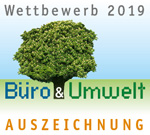
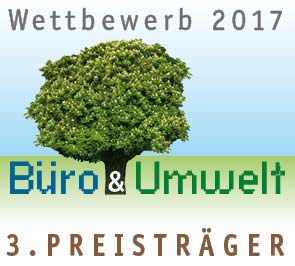
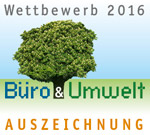
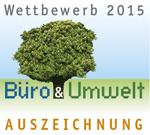
Recognition award »Büro & Umwelt« 2012-13,2015-2016. The competition concerning office and environment by B.A.U.M. e.V. is supportet by Federal Ministry for the Environment, Nature Conservation, Building and Nuclear Safety (BMUB) and Umweltbundesamt (UBA).
In 2009 I signed the Charter for Sustainable Design by the Alliance of German Designers (AGD)
1. Responsibility
Designers to a large extent share responsibility for how our world is shaped. Design moulds and serves as an example: it creates a new consciousness. Design consumes resources to a greater or lesser extent. Design has to do justice to the sustainable management of natural resources, the environment and people who ought to be able to live in this world for generations to come.
2. Sustainable design is a process
We see sustainable design as a process. The emphasis is not on producing a fully sustainable product, but rather on gradually improving existing products and processes.
3. The dimensions of sustainable design
Sustainable design:
- uses materials efficiently and appropriately
- is energy efficient
- minimises the use of harmful substances
- reduces and produces very little waste
- is durable
- is efficient in terms of recycling and waste disposal
- is efficient in terms of logistics
- is appropriate for its use
- is socially acceptable
4. Together with clients
With their clients, the signatories strive to develop individual and sustainable concepts for design, production and use. Advice given to clients is an important building block in realising sustainable design.
5. Socially sustainable
Sustainable design takes into account the working and living conditions of people involved in the production process, conserves the living environment of people and animals, and supports socially acceptable wages and working conditions. The objective of sustainable design is also to avoid exploitative child labour and dangerous working conditions.
6. Signatories to the Charter undertake to:
- continue to learn about sustainable design,
- aspire to using energy-saving production methods,
- reduce consumption of natural resources,
- work towards design, when advising clients, that protects the environment as much as possible, is socially justifiable and conserves resources in the production methods and materials used,
- pay attention to durability and ease of use,
- is financially viable and successful.

